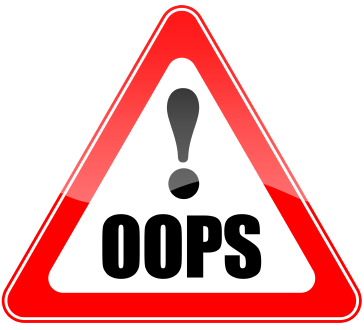 Websites flop every day. Either they’re not marketed well and die a slow death, or customers reject them because of appearance and poor writing. If you want your site to succeed, take aesthetics and style seriously.
Websites flop every day. Either they’re not marketed well and die a slow death, or customers reject them because of appearance and poor writing. If you want your site to succeed, take aesthetics and style seriously.
Here are a few mistakes to avoid if you want your site to compete with the best:
Shabby Layout
In the ’90s, you could get by with a painfully simple website that featured a few cheesy animations and barely readable fonts. Only the most stubborn companies have stuck to that thinking, and they’ve been largely forgotten. Take a look at this link to see an excellent example of Web layouts that do more harm than good.
Stay away from these design flaws:
- Contact info that’s impossible to find.
- Pink font on yellow background. Or yellow on pink. Anything close to that, really.
- Too much text with little or no white space.
- A complicated site map with no clear path back home.
- Layouts that don’t fit all screen sizes, forcing some visitors to scroll left and right.
Video Intros
Think twice about putting a video intro on your website. Here’s what your impatient visitor will think: “How do I end this? Can I ‘x’ out of it? Will this button skip the intro or close the page entirely? Meh, I’m done here.”
And really, what purpose would video serve anyway? The user’s interest is already piqued; why else would he be visiting your site? A slow-loading, long-playing commercial intro only acts as a hurdle.
If you want custom food manufacturers to see a video demonstration of your new food processing equipment, for example, just give them the option. Place it in a tidy spot on your site as a YouTube embed. Make sure auto-play is turned off.
Lack of Updates
For optimization purposes and for human readers, you should update the content of your website regularly and according to an editorial calendar. Content that is dated can turn off visitors who might otherwise use your site as a resource.
Successful sites refresh content from time to time, with information related to new products or services, staff changes, or company news. You can accomplish this with a company blog, as well. Make it topical and related to your customers’ interests, even if it’s something as difficult as performance measurement tools. Be mindful of dates and announcements that you include on your site. If you post an announcement for an upcoming event, be sure to remove it later.
Poor Writing and Editing
You’d be surprised how many website visitors are deterred by poor grammar, misspellings, and generally terrible writing. Write professionally. If you doubt your own writing, hire a writer who can communicate your message more effectively.
Don’t be fooled into thinking that jargon is the only way to sound smart, either. And be careful not to be overly formal. Don’t break out the thesaurus in a lame attempt to swap out your words with something more likely to make your high school English teacher proud. You can speak casually and still demonstrate that you know what you’re talking about.
Content That Hasn’t Been Optimized
One of the biggest reasons a company website will fail is because people don’t know it’s available in the first place. Sure, existing customers might pop in from time to time, but you’ll be invisible to prospective customers. Be sure that your site is optimized for search engines. Either place strategic keywords and links yourself, or consult with a marketing firm. In general, you want the content and the meta information of your site optimized and, if possible, the URL names themselves.
No Call to Action
A potential customer finally finds your site. Now what?
Your website is a means, not an end. You should have a clear goal in mind and be able to guide site visitors. Have a clear call to action, whether it’s to contact you for more information, register for a free seminar, or order a product at a discounted, online-only price. Make it easy for site visitors to interact, whether it’s engaging in actual business, requesting information, or commenting on a blog post.
Maintaining a solid, successful website is a matter of catching problems early and adjusting your strategy accordingly.
What other flaws can kill company websites? Leave your feedback for discussion in the comments below.
About this guest blogger: Chris Peterson is a copywriter for Straight North, a leading Web design firm in Chicago. He specializes in B2B and B2C marketing, with experience in informational blog posts, press releases, and website content that emphasizes search engine optimization. He is a graduate of Northwestern University, where he earned a Master’s degree in journalism.
Straight North provides a full range of online marketing services, including its innovative Chicago-based Web design group and highly experienced SEO team. Straight North develops strategy and executes marketing programs for clients with lead generation and e-commerce websites, and market regionally, nationally, or internationally. Follow Straight North on Twitter and connect with Straight North on Facebook.

